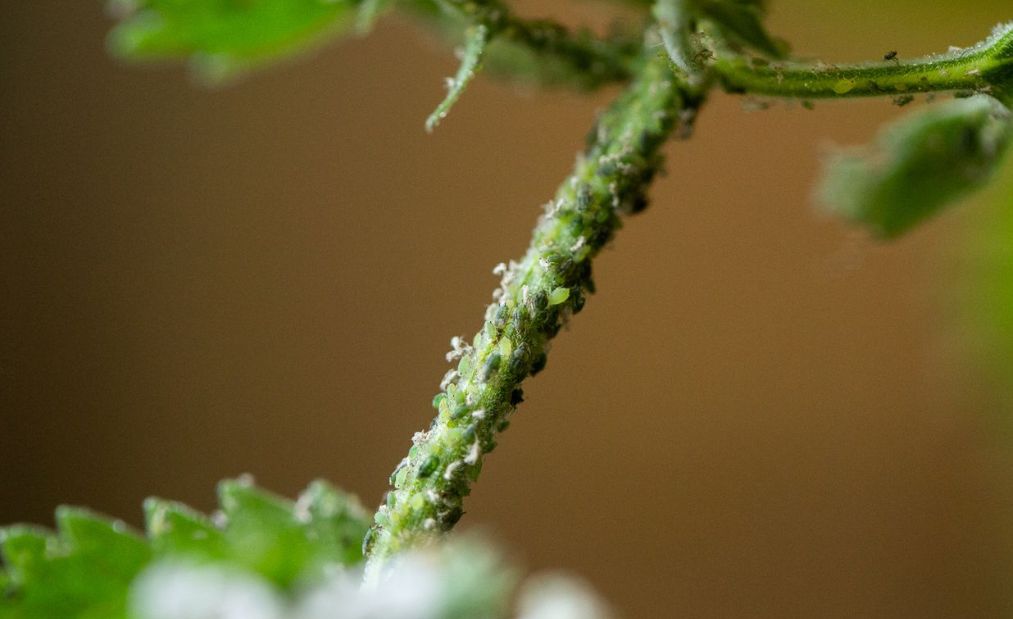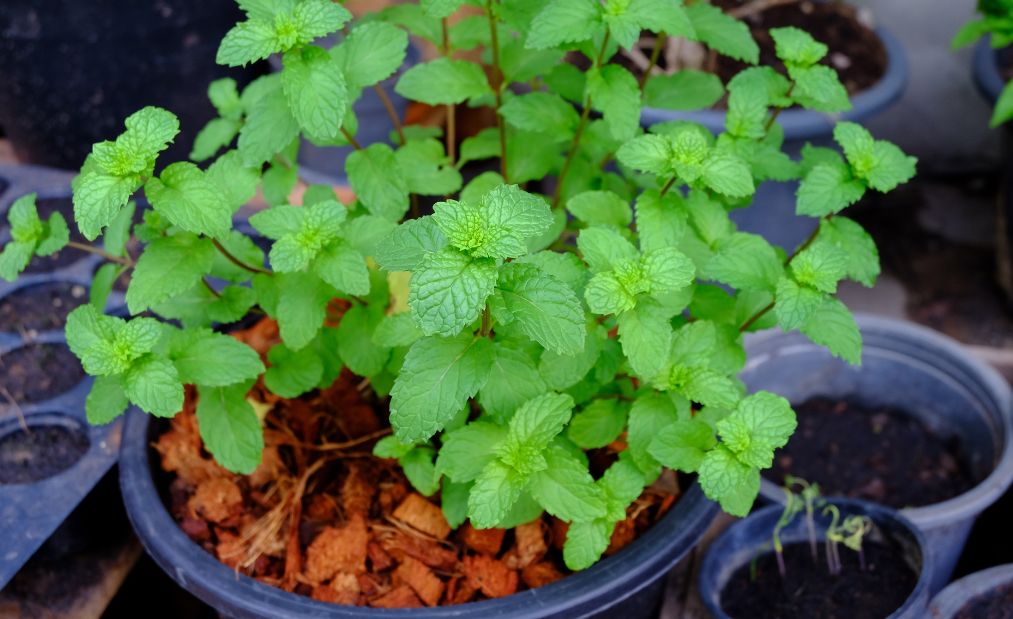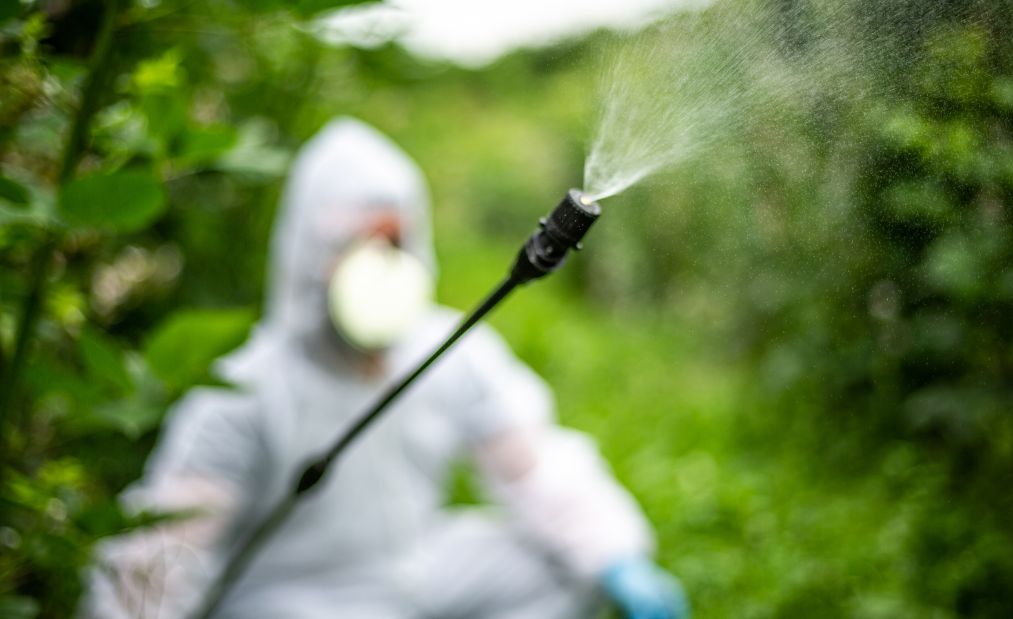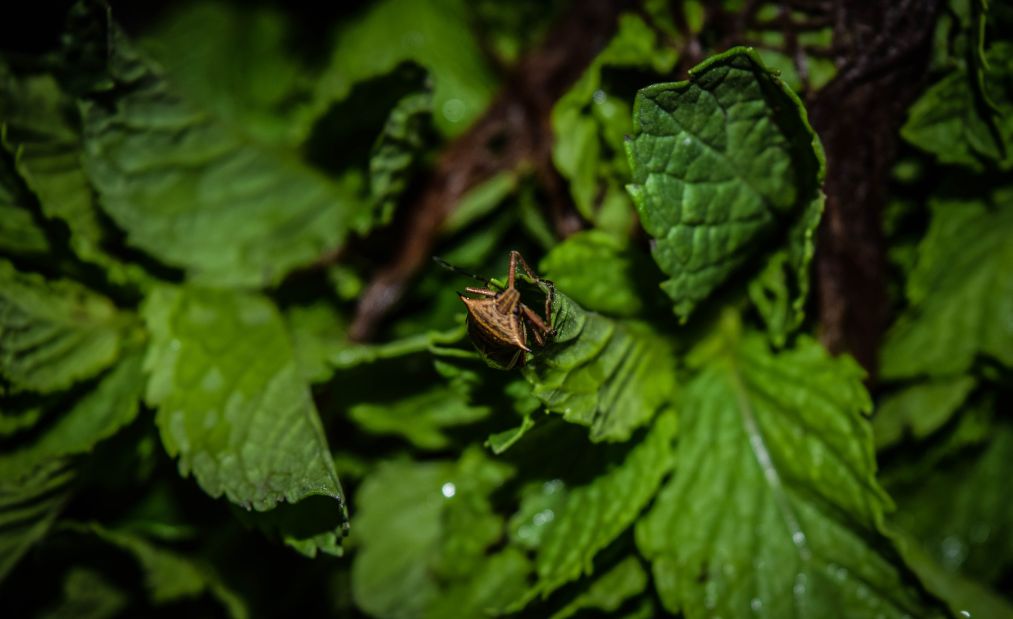Planting mint is quite a responsible task as you should take proper care of it. As this plant is vulnerable to many kinds of pests, one day you can discover any of them in your garden.
Fortunately, there are multiple ways to save your precious mint and defeat the pesky bugs!

Contents
Is it difficult to grow mint plants?
The mint plant is an extremely popular perennial herb that can be used for multiple purposes:
- Add mint leaves to your food
- Make fresh drinks with the mint leaves
- Extract the essential oils for refreshing air in your house
- Get rid of some pests such as mice, ants, and some kinds of bugs
- Use peppermint for medicinal purposes
The most popular mint varieties are:
- Peppermint
- Spearmint
There are also some other varieties with specific features:
- Apple mint
- Chocolate mint
- Ginger mint
- Pineapple mint
As a rule, the mint plant has branching stems and small leaves that are usually bright green, with soft tiny hairs covering all their surface.
The mint flowers are usually purple or white.
Growing mint is not a difficult task if you follow these simple tips:
- Mint can be planted in almost any type of soil. However, keep in mind that the mint plant prefers moist soil. Check the top level of the soil and water it when it is dry.
- The mint plant is really hardy and can tolerate high temperatures, so it is best planted in full sun or partial shade.
- Watch out both for pests and for the mint diseases, such as anthracnose, mint rust, or verticillium wilt.
- Always try to opt for the most eco-friendly ways to dispose of mint pests. Avoid using harsh chemicals that can damage your plants and pollute the soil.
When planting mint, it is crucial to be aware of the most common pests and the natural ways to remove them!

#1. Aphids
Aphids are well-known pesky “plant vampires” that can be found in most gardens. These tiny pests live in numerous colonies, so they can easily become a disaster for the attacked plants.
How to define it?
By nature, aphids are soft-bodied insects. Despite the name Peach aphid, this pest is usually different in color: you can see green, brown, yellow, red, pink, white, gray, and black aphids. These colors can vary depending on the aphid species and the affected plant.
To find the aphids, check the stems and the underside of the mint leaves. These oval-shaped insects live in groups and cover the plant surface. What is more, aphids are prone to spread quickly and cause a lot of damage to the mint plants.
Biting into mint leaves, aphids suck out the plant juices. In addition, they produce a sticky substance and leave it on the surface of mint leaves and stems.
When accumulated, this substance becomes a great breeding ground for sooty mold.
Inspect the mint leaves and stems thoroughly. Here are the sure signs of damage caused by aphids:
- Color fading
- Damaged surface
- Brown spots
- Stunted shoots
- Yellow foliage
- Growth retention
How to treat?
Aphids infestations can require different ways of treatment.
- If you notice small infested areas on the foliage, prune these leaves off the mint plant.
- As a variant, you can knock the aphids off by spraying water on the affected areas with a strong jet.
In case of more severe infestations, take more efficient actions.
- Treat your mint plant with an insecticidal soapy spray. This solution is specifically designed to remove pests from your plants.
- Smother aphids with a help of an oily solution. Neem oil is one of the best pest repellents. Extracted from the neem tree seeds, this oil becomes a great base for a versatile foliar spray. Neem oil also removes such kinds of pests as flea beetles and mealybugs. As a variant, you can use canola oil instead.

#2. Caterpillars and cutworms
Caterpillars are larvae of various butterflies or moths. Grass-feeding caterpillars are one of the most common pests for many kinds of plants, including mint plants.
Cutworms are specific types of caterpillars (which are by nature larvae of moths) that get their name from a pesky manner of eating plant leaves. As you can guess, cutworms enjoy feeding mint leaves a lot. So, if you have them in your garden, you will obviously notice their presence!
How to define it?
Being quite large, long, and noticeable, caterpillars are easy to find on mint plants. What is more, their presence is absolutely easy to reveal through several signs.
- Inspect your mint plant for signs of infestation. When eating mint plants, caterpillars leave lots of irregular holes and bite marks throughout the plant surface.
- Watch out for the base of the mint plant, particularly in the evening. That is the favorite time and place for the cutworms to appear. Being dormant in the daytime, cutworms activate in the evening darkness.
- Check your mint leaves regularly to notice the larvae on time. The earlier you notice them, the easier it is to prevent pest infestations. Be careful throughout the whole growing season!
- Use pepper spray to scare the caterpillars away, as they don’t like either heat or strong smells.
How to treat?
Although larvae are quite pesky, they are not difficult to get rid of.
- Never discount your manual power! The best method to get rid of any larvae is to remove them by hand. Prepare a bucket with soapy water and place them inside it. Pick the cocoons, too, in case you notice any.
- Always use a pair of gloves when gathering caterpillars! Since these hairy critters can be painful to touch, never forget to protect your hands.
- Make physical barriers to protect your mint plant! Surround your mint plant with diatomaceous earth. This barrier will dehydrate any larvae or adult insects while walking through it.
- You can also opt for an insecticide remedy. Such toxin as Bacillus thuringiensisworks best against pesky larvae.
#3. Flea beetles
Flea beetles are common mint pests that are prone to appear in the late summer. These insects jump high in a flea manner (hence the name), so they are difficult to pick by hand. Being harmful by their nature, flea beetles can also carry some plant diseases.
How to define it?
These are small, soft-bodied insects with dark and shiny backs.
You can see them hopping here and there on your mint plant, just like fleas.
Since flea beetles bite mint leaves, you can easily reveal their presence if there are multiple holes in the leaves. Unlike the holes made by caterpillars and loopers, these are pin-sized punctures all over the mint leaves.
How to treat?
Fortunately, these pesky insects are quite easy to get trapped or smothered.
- Make use of sticky traps. Place them on the soil around your mint plant to keep the hopping pests away from it.
- Spray the affected plants with soapy water or neem oily solution. To prevent a new infestation, repeat this procedure regularly during the growing season.

#4. Loopers
Loopers get their name from the manner of walking in a half-loop position. These pests are especially interested in the young stems and leaves of your mint plant.
How to define it?
By nature, loopers are one more type of caterpillar that eats mint leaves. However, they look a bit differently and have some specific food preferences:
- Unlike large, fuzzy, and colorful caterpillars, loopers are small, smooth, and green-colored.
- They are easy to define by their half-loop movement.
- Loopers prefer plants that smell strong, so they particularly love mint species with a stronger smell, such as peppermint.
Inspect your plant thoroughly to find these pests:
- Loopers are easy to reveal by the cocoon shedding traces on the plants.
- Watch out for the eggs that are usually placed on the underside of mint leaves.
How to treat?
- As well as caterpillars, loopers are easy to remove by hand. Pick them into a bucket of soapy water.
- Make use of pepper spray to dispose of these pests. It is much more eco-friendly than using a chemical pesticide.
#5. Mealybugs
Mealybugs are one more common types of soft-bodied pests in your garden that like eating mint leaves and stems. In addition, they produce honeydew that becomes a breeding ground for mold and attracts some other pests.
How to define it?
- Mealybugs are small, white, and fluffy, so they are easy to notice.
- The mint leaves start fading, which leads to early falling.
- The whole plant growth is stunted.
How to treat?
- Rub the mint leaves with a cotton bud soaked in alcohol or soapy water. Let it sit for a while, and then wash it away with clean water.
- Spray the plants with neem oil solution that smothers mealybugs and their larvae.
#6. Spider mites
Spider mites are tiny and hardly visible insects that feed off mint in your garden. Among many species of spider mites, the two-spotted one is the peskiest and most numerous. They thrive in dry and hot conditions.
How to define it?
- Use a hand lens to inspect the mint leaves for mites. There can be both mites and their eggs on the mint leaves.
- The signs of mite infestation are rusty-brown spots on the mint leaves and traces of a thin webbing on the plant.
- Underwatering can also be a sign of mite infestation.
How to treat?
- Regularly water your mint and the surrounding soil to prevent dry conditions that attract mites. A good idea is to spray your mint with a strong jet of water.
- Smother these pests with canola or neem oil solution.
- In case of severe infestations, make use of insecticide soap. However, be careful, as some insecticides can even worsen the situation and boost mite fertility.
#7. Thrips
Thrips are one more common pests that can damage your mint plants. These pests act similarly to aphids, as they bite mint leaves for juice.
How to define it?
Thrips are long-bodied and dark-colored insects with small wings.
Since they are flying pests, thrips are hard to catch by hand.
Look out for traces of thrips infestation:
- The mint leaves have lots of rust-like brown spots.
- The leaves start getting shriveled and curled.
How to treat?
Pyrethrin is the best repellent for flying pests. This bug spray is all-natural and works to paralyze the nervous system of insects. Spray the mint leaves to kill thrips and prevent a new infestation.

FAQ
How do you get rid of mint bugs?
Here are the most popular and safe ways to remove pests from mint:
• Insecticidal soap
• Neem oil
• Pepper spray
• Physical removal
• Sticky traps
Why does my mint plant have bugs?
Keep in mind that mint plants are vulnerable by their nature. Since mint plants don’t have any natural defenses, they have lots of natural enemies instead. So, you need to protect these plants by yourself.
What bugs does mint attract?
The mint plant is attractive to many pests as it is juicy, strong-flavored, and absolutely vulnerable. With no natural ways of defense, mint attracts plenty of different bugs.
Here is a list of the most common mint pests:
• Aphids
• Caterpillars
• Cutworms
• Flea beetles
• Loopers
• Mealybugs
• Spider mites
• Thrips
What are the mites on my mint plant?
The mites that you can see on the mint plants are called spider mites. Similar to spiders, they produce thin webbing that covers plants. These insects feed off mint leaves by extracting juice from them.
The two-spotted spider mite is the most common pest that you can meet on the mint leaves. When they start eating mint leaves, you can easily see their presence. The affected leaves are covered with bronzed spots and tiny punctures. In addition, these pests produce and spread a thin web over the host plants.
Final thoughts
For a caring and patient gardener, it is not a problem to dispose of pests on the mint leaves.
If you have some more good ideas on how to save your mint from bugs, share them in the comments below!
Read More: How to Get Rid of Mint Plant Pests


